Civil War Nurse in Washington, DC In 1803, some families from Bristol and Meriden, Connecticut, moved to the wilderness of New York, and settled in what is now Otisco, Onondaga County. Among these were Chauncey Gaylord, a sturdy, athletic young man, just arrived at the age of twenty-one, and “a little, quiet, black-eyed girl, with a sunny, thoughtful face, only eleven years old.” Her name was Dema Cowles. So the young man and the little girl became acquaintances, and friends, and in after years lovers. In 1817 they were married. Their first home was of logs, containing one room, with a rude loft above, and an excavation beneath for a cellar. In this humble abode was born Lucy Ann Gaylord,…
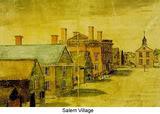
Mary Ayer Parker
Salem Witchcraft Trials From June through September of 1692, nineteen men and women, all having been convicted of witchcraft, were carted to Gallows Hill, a barren slope near Salem Village, Massachusetts, for hanging. Another man of over eighty years was pressed to death under heavy stones for refusing to submit to a trial on witchcraft charges. Hundreds of others faced accusations of witchcraft. Dozens languished in jail for months without trials. The Accusation Mary Ayer, daughter to John and Hannah Ayer, married Nathanial Parker. She was 55 years old and a widow in 1692. Mary was accused of witchcraft, but refused to confess during the witchcraft trials saying, “I know nothing of it, there is another woman of the same…
Alice Parker
The Year: 1692 On May 12, 1692, warrants were issued to apprehend and bring before the magistrates, “Alice Parker, the wife of John Parker, and Ann Pudeator, widow of Salem, widow.” Alice Parker, commonly called Elsie, was the wife of a mariner. Perhaps she had been prone to take melancholy views of the dangers to which seafaring people are exposed. < A Witchcraft Trial Illustration by Howard Pyle (1853–1911) Samuel Shattuck of Salem seems to have been very active in getting up charges of witchcraft against persons in his neighborhood, and on the most absurd and frivolous grounds. Alice Parker had made a friendly call upon his wife, and not long after, one of his children fell sick. He suspected...
Judith Carter Henry
First Civilian Casualty of the Civil War At first, Americans viewed the Civil War romantically, as a great adventure. To many, it was a crusade of sorts that would be decided quickly, and would return both the North and South to a peaceful way of life, either as one nation or two. But events near the small Virginia community of Manassas Junction would change all that. Image: Ruins of Henry House after the Battle of Manassas The importance of the First Battle of Bull Run, or Manassas as it was generally known in the South, lay not so much in the movement of the armies or the strategic territory gained or lost, but shocked the nation into the realization that…
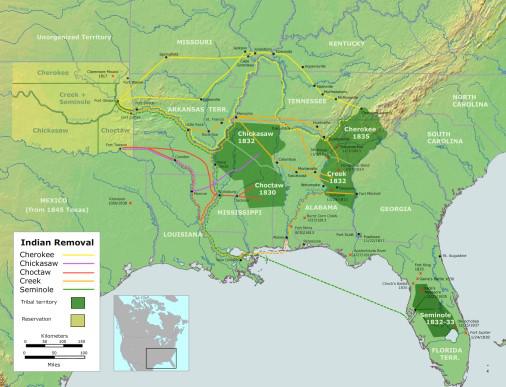
Native Americans of North Carolina
North Carolina Natives Early History At the time of the first European contact, North Carolina was inhabited by a number of native tribes sharing some cultural traits, but also distinguished by regional and linguistic variations. Three major language families were represented in North Carolina: Iroquoian, Siouan, and Algonquian. Image: Map of Cherokee homelands and other eastern tribes Before being forced to move west to Oklahoma The Iroquoian tribes – the Cherokee, Tuscarora, Meherrin, Coree, and Neuse River – were related linguistically and culturally to the Iroquois tribes to the north. The Algonquian-speaking tribes represented the southernmost extension of predominantly Northeastern Woodlands tribes and were located entirely in the tidewater area of the state. These were the Bear River, Chowan, Hatteras,…
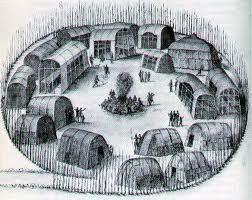
Native Americans of South Carolina
South Carolina Indian Tribes Image: Carolina Indian Village Depicted in a drawing by John White The cutaways in the drawing were done in order to show the interior design of the structures. For thousands of years before Europeans arrived in present-day South Carolina, the area was occupied by Native Americans – at least 29 distinct tribes. The Catawba, Cherokee, Chicora, Edisto, Pee Dee, and Santee tribes are all still present in South Carolina. The many places in South Carolina that bear the names of tribes attest to the important role Indians played in the state’s history. Sadly, the Indian population in South Carolina and throughout the United States greatly declined after the arrival of Europeans. Tribes were weakened by European…
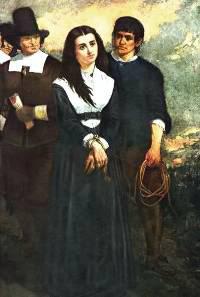
Mary Easty
Salem Witch Trials Image: The Salem Martyr By Thomas Slatterwhite Noble Noble gained a reputation for his dramatic paintings of abolitionist subjects, and later turned to the Salem witch trials for another powerful moral theme. The Salem Martyr won a silver medal at the 1869 Cincinnati Industrial Exposition. A tradition in the Noble family holds that the model for this painting was a Cincinnati librarian who was a descendant of a woman who was executed in the Salem witch trials. Mary Easty was well respected in Salem, Massachusetts in 1692. She was a kind religious woman whose dignified demeanor fit the strict Puritan mold. She was about 58 years old at the time, and was married to Isaac Easty, with…
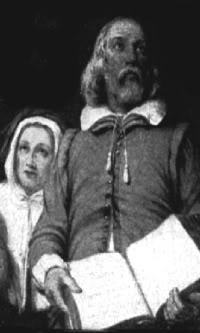
Martha Corey
Salem Witchcraft Trials Image: Martha and Giles Corey Martha Corey lived on a farm in the southwest corner of Salem village with her husband Giles, a prosperous, uneducated, eighty-year-old farmer and full member of the church. In March 1692, Martha Corey made the mistake of publicly questioning the sincerity of the accusations of the afflicted girls – a group of Salem girls who had condemned several people as witches. The Accusation When the girls learned of Martha’s attacks, they quickly responded by accusing her of witchcraft. When the girls first mentioned the name of Martha Corey, Edward Putnam and Ezekiel Cheever went to see Martha about the matter on March 12th. On the way, they saw Ann Putnam and asked…
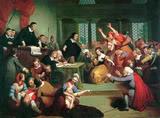
Martha Carrier
Salem Witchcraft Trials Image: Scene at Witchcraft Trial Born Martha Allen, she was the daughter of one of the original founders of the Massachusetts town of Andover. In 1674, Martha married below her station to a young Welsh servant, who was the father of her illegitimate child, Thomas Carrier. Living for a few years in Billerica, the couple returned to Andover in the 1680s with very little money and four children. The couple settled in Billerica proceeded to enlarge their family. After what must have been a joyful time for the Carriers, now with three sons and two daughters, the tough times began in 1690. The next two Carrier children died from the common 17th century disease of smallpox.
Fannie Lawrence Ricketts
Civil War Nurse Fanny Lawrence was the daughter of an Englishman of wealth, J. Sharpe Lawrence, who owned large estates on the Island of Jamaica. Her parents were married at Elizabeth, New Jersey, and after some years of migratory life between England and the West Indies, decided to remain. There their third daughter Fanny was born. Image: Fanny and James Ricketts In January, 1856, Fanny Lawrence married James B. Ricketts, a distant relative on her mother’s side who was then a captain in the First Artillery, U. S. Army. James was a career soldier who held the rank of captain. He was a graduate of West Point, and fought in both the Mexican and Seminole Wars and served in various…